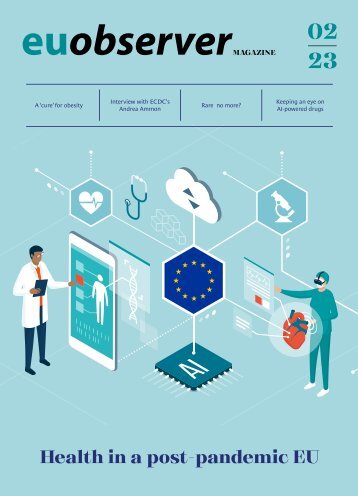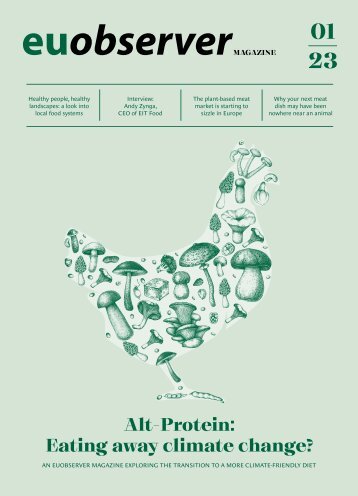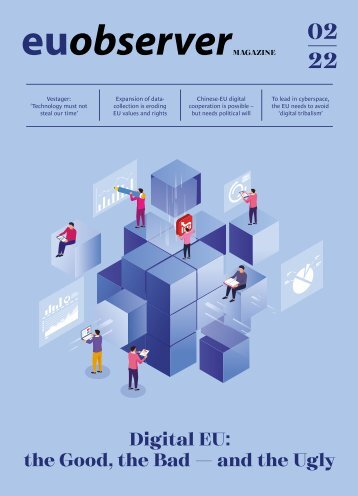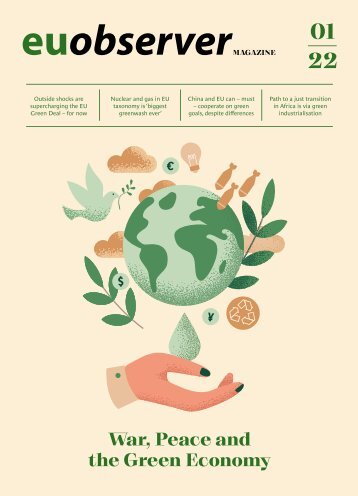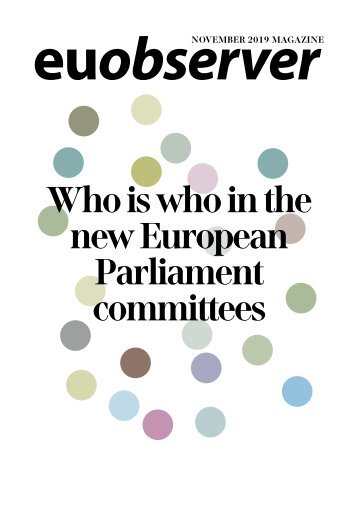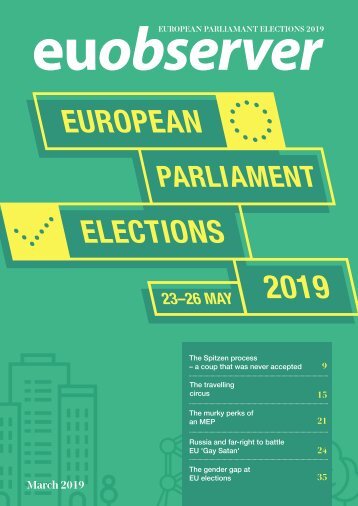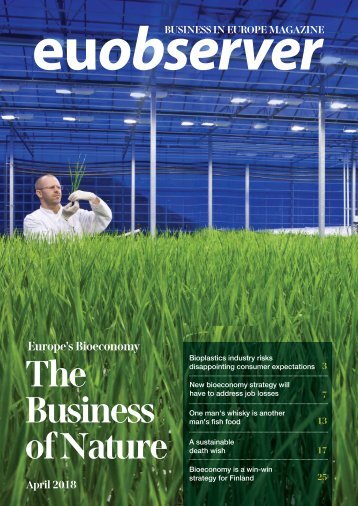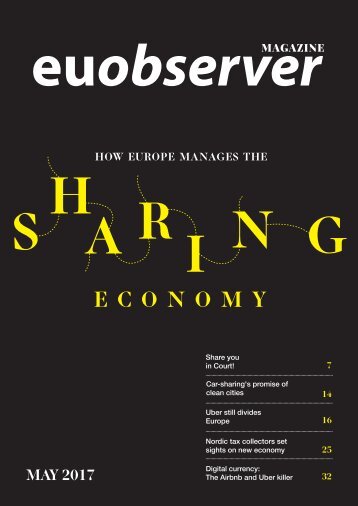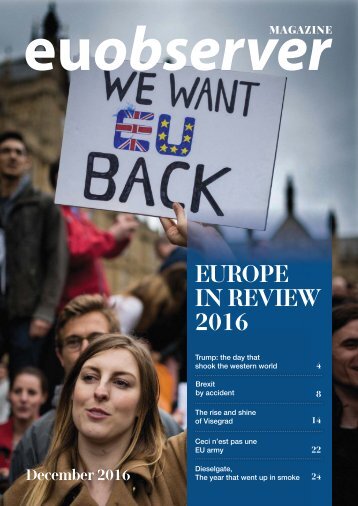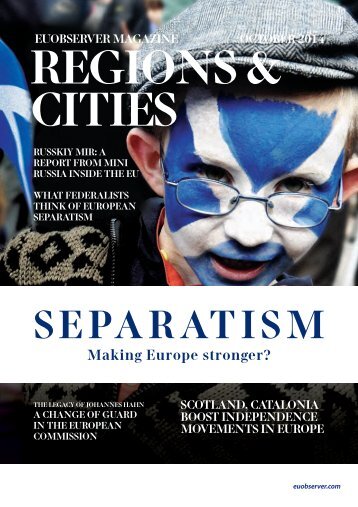Health in a post-pandemic EU
- Text
- Vaccines
- Health
- European
- Pandemic
- Diseases
- Healthcare
- Obesity
- Mrna
- Pharmaceutical
- Medicines
KEEPING AN EYE ON
KEEPING AN EYE ON AI-POWERED DRUGS If these tests are successful, AI could upend the drug discovery process. Researchers typically spend years sifting through troves of data and test results to land on promising drug candidates in the lab – only for many to fail during clinical trials. AI models could improve the odds by helping researchers identify the right target in the body for a particular disease, then find or even create the right molecule to interact with it, and lastly, predict which patients it could help. Pharma companies could then invest in only the most favorable options, cutting out much of the early trial and error. It isn’t a surefire strategy: Exscientia’s OCD trial, for example, shuttered in 2021 after failing to meet its targets. But ultimately, the goal is to bring cheaper medicines to patients faster, while bringing in billions of dollars in profits. “Just from drug discovery to clinical development, that span is about five and a half years,” said Aarti Chitale, a senior industry analyst for health care and life sciences at the advisory firm Frost & Sullivan. “Some of the leading AI vendors are able to bring that duration down to only about 18 months.” Money pours in Investors have taken note of the opportunity, pouring at least billion into startups targeting AI in early drug development since 2019, while European pharma giants have announced major deals to expand their AI capabilities. France’s Sanofi, for example, inked a .2 billion pact with Atomwise to sort through small molecules in 2022, while the British-Swedish AstraZeneca expanded its partnership with the United Kingdom’s BenevolentAI to hunt for treatments for systemic lupus erythematosus and heart failure, in addition We believe that there is huge promise from artificial intelligence in terms of medicines development,” Peter Arlett to chronic kidney disease and idiopathic pulmonary fibrosis. As of 2022, there were nearly 270 companies working on AI-powered drug discovery around the world, with Western Europe serving as a growing hub, according to consultancy firm McKinsey & Co. “We believe that there is huge promise from artificial intelligence in terms of medicines development,” said Peter Arlett, head of data analytics and methods for European Medicines Agency, which oversees pharmaceutical products for the European Union. Notably, the use of AI for drug discovery is generally considered low-risk because if a potential medicine fails, it fails in a simulation, not a patient. Instead, AI likely poses a greater risk in later stages of drug development given the potential for ethical issues, risks of human biases to work their way into algorithms or flawed data analyses that are used in a drug’s application for regulatory approval. Regulating pharma AI As pharmaceutical companies lean more heavily on AI across the therapeutic pipeline, regulators are catching up to ensure these tools are used safely. The EMA published a draft paper this summer on the path forward for AI in drug development, and will hold a workshop in November to solicit feedback from the pharma sector and other stakeholders. “We see it as the start, the very start, of [AI] guidance and regulation in the pharmaceutical sector,” said Arlett, who is also co-chair of the EMA’s Big Data Steering Group. The reflection paper is set to be finalized by late 2024, but it will likely “change significantly” before then based on external feedback, Arlett said. While the document won’t be binding, it will offer a more concrete picture of the regulatory guidance to come in 2025 or 2026, which pharma companies will be expected to follow. Heading into the November workshop, Arlett said regulators broadly agree that they should categorize the risks of AI for different purposes so that “we don’t over-regulate where the use of AI may be just a background process, and not impact the benefit-risk balance for a medicine.” Even so, he said regulators should have at least some access to drugmakers’ algorithms and the data used to train their models during the discovery process, as well as insight into how algorithms are used to manage medicines after they’ve been authorized – for example, if an algorithm helps to determine a patient’s insulin dosages, the EMA wants to know how it works. The level of transparency that will be required is still up for debate. “Because the algorithm is learning, we will need probably to think innovatively as to how we oversee that,” Arlett said. “The existing framework, which is rather strict and very structured … may not be optimal for something that’s as fast-moving as a learning algorithm.” The industry responds The pharma industry is keeping tightlipped ahead of the November workshop, though executives from some leading firms, including Exscientia, have pushed back against proposals to establish AI-specific drug discovery regulations. In a statement, the Brussels-based trade group European Federation of Pharmaceutical Industries and Associations said that new AI policies should “balance benefits and risks of AI while supporting and fostering innovation,” and that “we already have a robust framework for handling statistical and predictive models and software that will apply to many uses of AI in medicines development.” Regardless of looming changes to the regulatory landscape, drugmakers still need to figure out how to bring AI-powered medicines to market – and prove that they’re more beneficial than existing treatments. Ultimately, clinical success will be the key determinant for how widely AI is used for drug discovery, rather than time or cost savings, as noted by the Boston Consulting Group. Transforming pharma The industry faces some other challenges, too. AI and machine learning models need robust, high-quality datasets to work well, and a central repository for drugmakers doesn’t yet exist in Europe. Further, most investment in the past five years has been in high-income countries and focused on the profitable fields of oncology and neurology, leaving infectious diseases – which carry a much greater health burden globally – underinvested in, excluding COVID-19. Global economic uncertainty could also slow progress for smaller firms and startups, Chitale said. While venture capital funding for AI-powered drug discovery startups soared in 2021, reaching .7 billion, that level was much lower in 2022 and 2023, in line with a broader investment slowdown, according to analytics firm CB Insights. Even so, industry players, academics and funders believe AI is poised to transform the pharma sector. In a recent survey, 84% of those currently using AI said they expect it to play a significant role in drug discovery over the next five years, compared with 70% among those not using AI. In Europe, the use of AI isn’t limited to the early stages of research into potential blockbuster medicines. EFPIA, the drug industry trade group, said major pharma companies are “employing AI and ML approaches across the entire lifecycle of medicines development” – from drug discovery and manufacturing to safety monitoring and beyond. • About Gaby Galvin Gaby Galvin is a freelance journalist based in Amsterdam. Her work has appeared in Euronews, U.S. News & World Report and Healthcare Brew, among others. 35
- Page 1 and 2: MAGAZINE 02 23 A ‘cure’ for obe
- Page 4: TABLE OF CONTENTS HEALTH IN A POST-
- Page 8: A ‘CURE’ FOR OBESITY HEALTH IN
- Page 12: WHO CARES? HEALTH IN A POST-PANDEMI
- Page 16: HEALTH IN A POST-PANDEMIC EU Stakeh
- Page 20: HEALTH IN A POST-PANDEMIC EU Rare n
- Page 24: Stakeholder Article The looming thr
- Page 28: “IT’S NOT JUST ABOUT SLOGANS”
- Page 32: Keeping an eye on AIpowered drugs T
- Page 38: HEALTH IN A POST-PANDEMIC EU Prescr
- Page 42: Support truly independent European
Inappropriate
Loading...
Mail this publication
Loading...
Embed
Loading...
